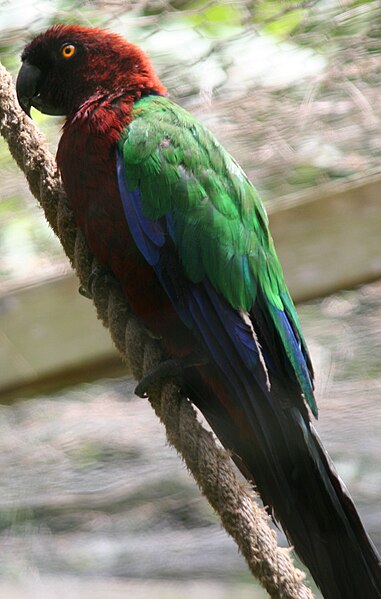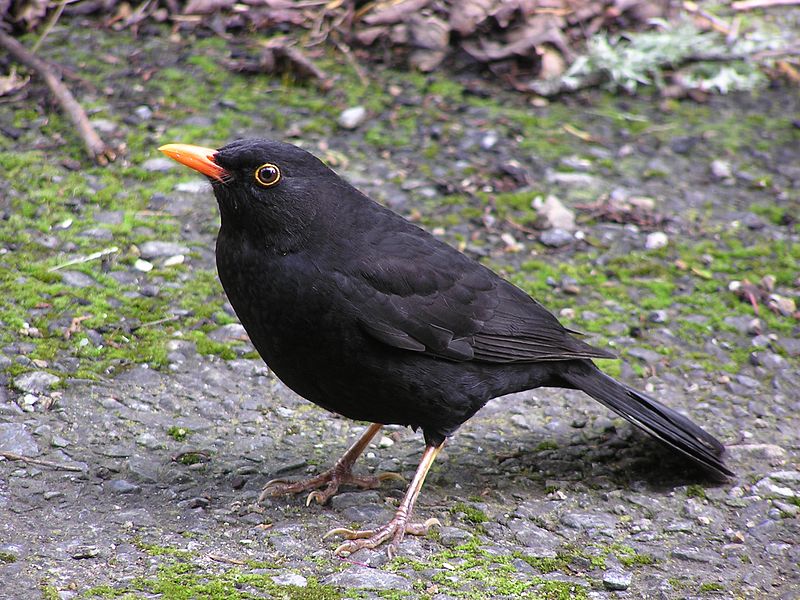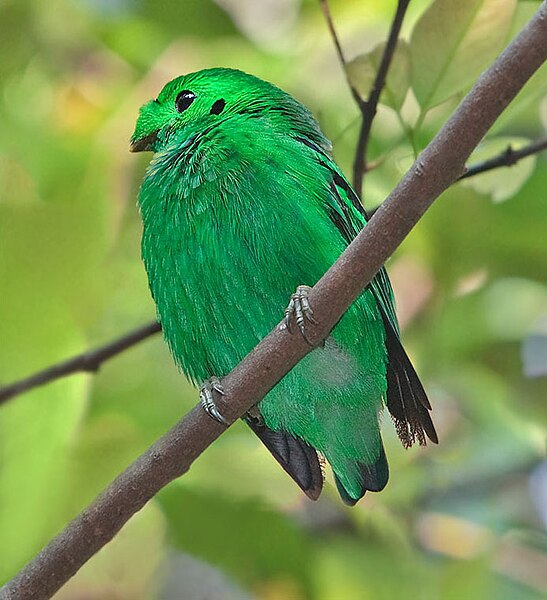The problems afflicting the African Gray Parrot have been very much in the news recently (please see video below), and some important conservation efforts have been initiated. Less well-known, however, is the desperate situation facing the Cape Parrot, Poicephalus robustus. With a wild population hovering at approximately 800 individuals, this relative of the Senegal and Meyer’s Parrot is Africa’s rarest Psittacine, and the most threatened bird in South Africa.
650 Years of Habitat Destruction
The Cape Parrot is limited in range to mountainous forests in South Africa (please see photo), a habitat that has been heavily logged for over 650 years. In addition to actual habitat loss, deforestation also limits the availability of the tree hollows. Rare even in intact forests, hollows are essential to Cape Parrot nesting success…the bird cannot adapt and utilize alternative nest sites. Cape Parrots have also been hunted as crop pests and illegally collected for the pet trade.
Disease Complicates Conservation Efforts
 But it is disease that may finally finish-off this beautiful, little-studied bird. Just as an unprecedented fungal epidemic is now causing amphibian extinctions worldwide, Cape Parrots are being decimated by a disease that seems not to have been a major threat in the past.
But it is disease that may finally finish-off this beautiful, little-studied bird. Just as an unprecedented fungal epidemic is now causing amphibian extinctions worldwide, Cape Parrots are being decimated by a disease that seems not to have been a major threat in the past.
Over the past 5 years, increasing numbers of Cape Parrots have been succumbing to Psittacine Beak and Feather Disease (PBFD). Long known in both wild and captive populations of many species, PBFD has never affected so many individuals, and to such a degree, as now. In one study along the southern edge of their range, 100% of the Cape Parrots sampled tested positive. Ornithologists fear that some environmental factor is worsening the disease’s effects or increasing its ability to spread.
Food May Hold Survival Key
Aided by funding from the National Geographic Society, The Percy Fitzpatrick Institute of African Ornithology has launched the Cape Parrot Project. The effort is distinguished by its broad scope and, I believe, should be used as a template for others.
Researchers noticed that birds undergoing treatment for PBFD quickly began to put on weight and recover when they were fed Yellowwood Tree fruit. Subsequent lab tests confirmed that Yellowwood Tree fruit contains compounds that kill a variety of microbes. Yellowwood Trees are now scarce in the Cape Parrot’s range; a lack of this formerly common food may, to some degree, account for the species’ new susceptibility to PBFD. DNA sequencing of the PBFD virus was also commenced, in order to determine if a recent mutation might be involved.
Other work is in progress. Twenty-five thousand native trees have been planted in Cape Parrot habitat, and 600 nest boxes have been erected. Local communities are paid to care for and monitor the new trees. Potentially toxic plants, introduced from the USA, Japan, Mexico and India, are being studied, and supplementary food sources have been planted. The rehabilitation of PBFD-infected parrots continues. It is hoped that a new population of disease-free Cape Parrots can be established in an area from which they disappeared over 150 years ago.
Further Reading
The Cape Parrot Project on Facebook
Understanding Psittacine Beak and Feather Disease
Video: African Gray Parrot Conservation (Nat Geo)
Rare Finches of the Impenetrable Forest
Keeping Senegal and other Poicephalus Parrots
 That Bird Blog – Bird Care and History for Pet Birds
That Bird Blog – Bird Care and History for Pet Birds




